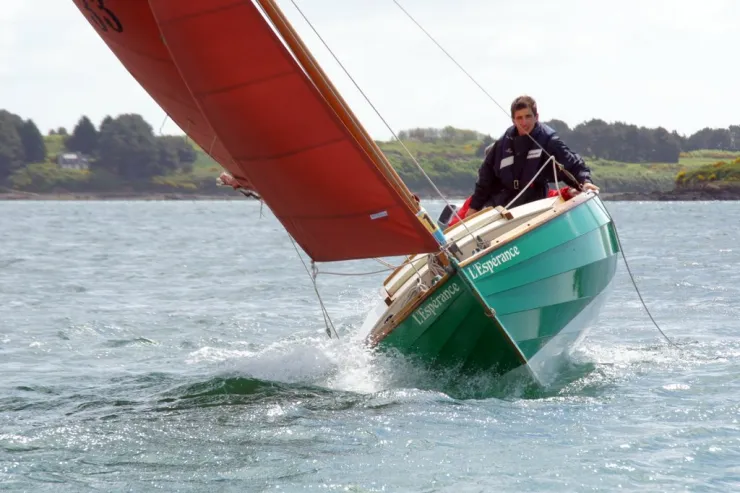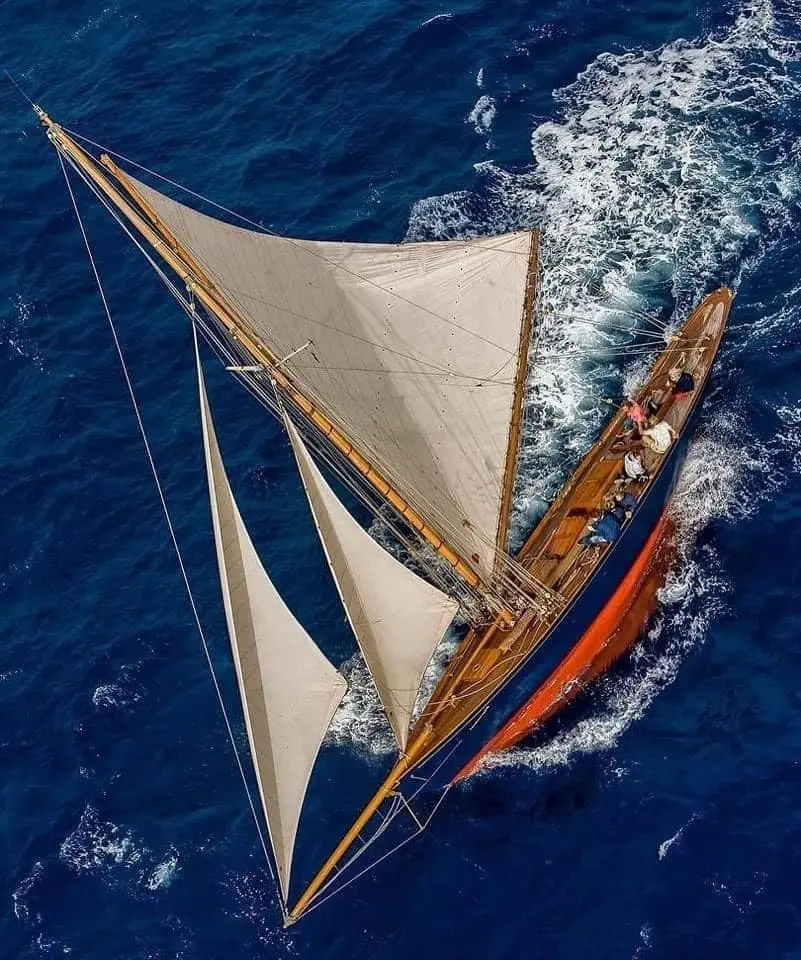
We manufacture America Sailboat for Sale. Check for sailing boats, yachts, motor boats, and classic wooden boats for sale. High quality & low price
The Parts of an America Sailboat
The Hull
Determining the design loads for the hull is a difficult problem. There are many different loads that must be properly accounted for. Similar to ships, the hull is subject to hydrostatic pressure along with dynamic loads due to waves, slamming, grounding, and collisions.
Unlike ships, sailing yacht hulls are also subject to sailing loads due to the sails and rigging. The mast(s) is in compression and the stays and shrouds are in tension, leading to large longitudinal and transverse bending moments on the hull. Complicating the loading and stress distribution is the fact that sailing yachts can have up to 60% of their weight concentrated at the keel attachment point which is often near the base of the mast; for IACC boats the ballast ratio is over 80%.
In addition, the loading is often asymmetrical due to the heel of the yacht and the sails being to one side. The loads experienced by a sailing yacht are illustrated in Figure 1
Yachts can also be subject to large loads while being put into and removed from the water. Boats up to approximately 10m in length are often put on trailers where the hull is supported by a few rollers as point loads. Larger yachts are put into and removed from the water using travel lifts and slings that normally support the hull in only two places. The loads from trailers (if appropriate) and travel-lift slings depend only on the weight of the hull and are easily predicted. They must be checked during the design stage and for some yachts could be the critical design load for the hull scantlings.
America Sailboat and Sailing Yachts

Sailing yachts are also subjected to impact loadings arising from a large range of possible impact events, from collisions with other craft or floating debris and grounding to everyday docking bumps and objects dropped onto decks or inside the hull. Impact damage may of course be dangerous because a breach may lead immediately to the loss of the vessel, but also because less severe damage may significantly weaken the vessel’s structure. Further, damage may grow with cyclic loadings leading to a catastrophic failure under normal loading.
The hydrostatic loads in a calm water are easily determined, but typically they are not the critical design loads. The real challenge is in predicting the hydrodynamic and rigging loads on the hull due to sailing, particularly in extreme conditions. Rigging loads are discussed in Section 4 and hence will not be further mentioned in this section.
Design hydrodynamic loads will be the main focus of this section. There are a limited number of studies into predicting analytically the loads on sailing yacht hulls. Recently, various nonlinear methods have been developed to predict the design loads for ships operating in a seaway. For example, the ISSC committee report (2000) on “Extreme Hull Girder Loading” reports on nonlinear time-domain codes that can determine the nonlinear loading on a ship. An overview of nonlinear methods for a
ship at forward speed is given by Beck and Reed (2001).
Alford and Troesch (2008) present a method to create a wave amplitude time history with a specified extreme wave height that can be used in a nonlinear, time-domain ship motions code. A great deal of research has also gone into predicting pressure loading due to water impact that may have direct application to the analytic prediction of loading on yacht hulls. Korobkin (2004) gives an overview of various water impact models that have been developed. Most water impact theories are for a constant velocity, vertical entry. Sailing yachts are often heeled and the theories must be modified for asymmetric sections.
Judge et al. (2003) present results for wedges entering the water at oblique angles. Since water impact happens on an extremely short time scale and the pressure peak is localized near the spray root line and travels very fast across a given panel, the elastic response of the local hull structure becomes important (see for example Faltinsen, 2000). Ideally, the plating and stiffeners in areas susceptible to slamming would be designed using hydroelastic analysis that takes into account both the hydrodynamics and structural dynamics of the problem.
An alternative approach to predicting the dynamic pressure loadings due to water impact and attempting to apply these directly to a hull structural model is to use the concept of an equivalent uniform static (or effective) pressure. These correspond to the pressures which, if applied to a particular structural component in a static manner, will result in the same maximum deformation and maximum stress as produced by the
actual dynamic loading (Allen and Jones, 1978).
Such an approach is also common for high-speed motor vessels. Obtaining such an equivalent uniform static pressure using experimental data for an array of pressure transducers over a model, or full-scale, the hull is difficult due to the non-uniform distribution of pressure over the hull following a slam and the very short time period associated with the event.
Realistically, many designs are undertaken using static analysis with such slamming design pressure and reduction factors to account for location, panel size, structural dynamics, and type of boat. The slamming design pressure typically depends on the size and speed of the yacht. Joubert (1982) analyzed 7 actual yacht failures or large plastic deformations that occurred when beating to windward in gale-force winds. Using knowledge of the hull structure, Joubert was able to hindcast the slamming loads that would be necessary to cause the damage.
Using four different analysis techniques (linear theory, membrane stresses, plastic deformation analysis, and plastic limit theory with large deformations) he found widely differing pressure predictions. Joubert’s final conclusion was that although the data is sparse the bottom panel loads on 40-foot length yachts beating in a gale may involve slamming pressures as great as 80 psi. Attempts have been made to use model scale experimental data to obtain the average load on a representative panel area of the hull bottom involved in a slam impact.
Such an average load may be obtained through the use of ‘slam patches’. These are panels, representative of the area of a full-scale hull panel, of high stiffness cut out of a hull model and attached to a load cell via a rigid strut. The load cell then records the average external pressure load acting on the panel. Such a technique, first used for motor vessels (Purcell et al, 1988), was applied to an Open 60’ yacht by Manganelli et al (2003).
Through extensive experimentation, they found equivalent slamming design pressures for the yacht traveling in waves in both upright and heeled conditions. An analytical method developed for comparison to the experimental data including hydroelastic structural effects indicates good agreement. No comparisons to pressures predicted (or used) by Classification Society rules are presented.
Other research specifically directed towards the prediction of sailing yacht loads may be found in Boote et al. (1985) who examined a finite element model and a classical longitudinal strength approach to an aluminum 12m yacht in calm water. They also discuss full-scale trials, although little data is presented.
Ward (1985) analyzed the dynamic stresses in a beam due to a slamming-like pressure peak traveling across the beam. This simplified problem has direct application to the impact forces on the bow sections of a yacht sailing to windward. Ward finds similar trends as used in the ABS
empirical impact reduction factors. An extensive hydroelastic analysis of a WOR 60 yacht was conducted by Louarn and Temarel (1999).
Using a combination of finite element analysis for the structure and linear potential flow theory for the hydrodynamic loads, they found that the largest stresses were in the vicinity of the hull to the keel joint area. The effects of heel and rigging loads were included in the analysis.
